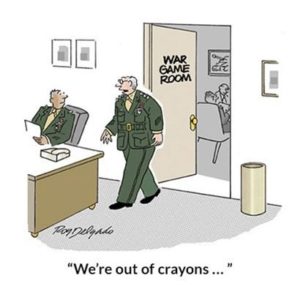Definition.
Grey Zone conflicts also referred as shadow wars have been defined in many ways.
They are not formal or traditional conflicts or full scale wars between nations or states.
Grey zone operations or conflicts fall somewhere in between the peace-conflict continuum.
Two major characteristics of Grey Zone conflicts are that the threshold is maintained below the level of full scale war, and second that, the means of operations are not restricted to military actions. Variety of instruments of power, often asymmetric and ambiguous in character are used to achieve the objectives.
Means.
Grey zone conflicts focus on the weaknesses and the vulnerabilities of countries being addressed.
The vulnerabilities could include weak economic conditions, internal disparities, ethnic alignments and religious polarisation etc.
Based on these vulnerabilities, local population, disillusioned elements or even the diaspora could be exploited.
The grey zone activities could be in the domain of politics, economy, social movements, diplomacy, cyber, space, information, psychological and / or communications.
Characteristics.
Grey Zone operations are generally sub-conventional in nature employing irregular means.
They could be overt or covert, carried out by proxy players or non-state actors.
They generally have a high degree of ambiguity and deniability.
Invariably they are conducted in multiple domains, maybe using both kinetic and non-kinetic modes simultaneously.
They generally include the nuances of other classifications of hostile actions like no war no peace, hybrid operation, asymmetric and sub conventional warfare etc.
Comparison and Differentiation.
Grey zone conflicts, no war no peace operations and hybrid warfare are terms used by security analysts and academics to describe prevailing hostile conditions between two countries.
No war no peace (NWNP) operations also fall in the same zone as grey zone conflict, but NWNP operations are generally referred to military actions whereas, grey zone activities could be in any of the numerous domains mentioned above.
Grey zone conflicts and hybrid warfare are other two terms which could be confusing. Grey zone is an operational environment encompassing the space between peace and war, whereas, hybrid warfare refers to the threats that are exploited in multiple domains. These threats could be employed either in full-fledged open war or in Grey-Zone conflict situations.
Grey-Zone conflict and hybrid means are not independent of each other, they are intricately linked to each other.
Value additions and comments are most welcome
coming up: Various aspects of grey zone operations
For regular updates please register here –










